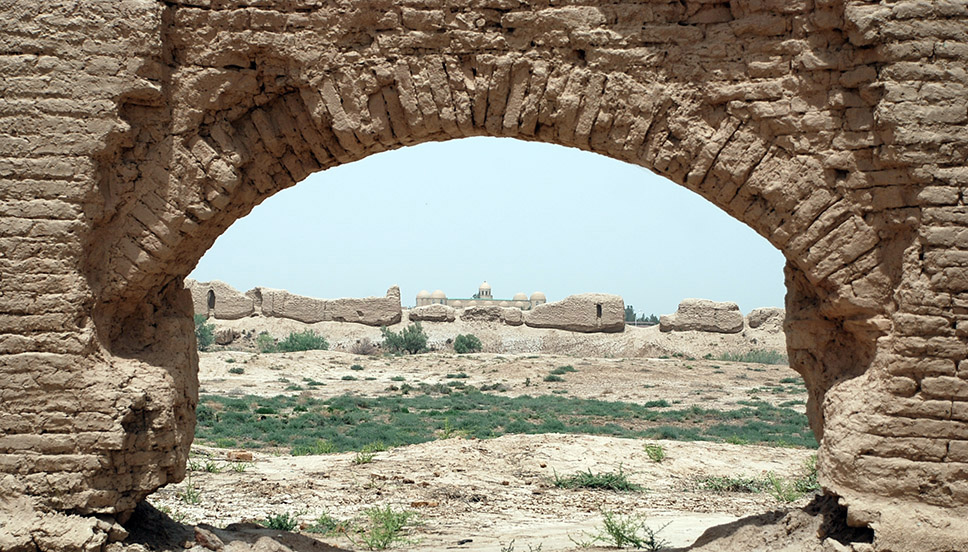Turkic musical instruments
Chordophones
Dutar comes from the Persian word -two string (do-tar). It is the traditional long necked two stringed lute known in Central Asia and in Iran. It is usually tuned in 4th and it has 13 adjustable frets allowing to play the full semitones scale on the instrument. It is also most common musical instrument found in all of the main genres of Turkmen music. The apparent simplicity of playing a two stringed lute is also part of its charm to the many musicians who play it.
Dutar music difference is that perfection of the music lies in the sophistication of the playing technique and is not on the instrument. The most closed cognates of Dutar, in the Central Asia, are Dombra and Komuz. In the meanwhile, Dutar music in Turkmenistan and in Uzbekistan is different, as it is based on the varied musical compositions and involve different playing techniques.
While playing, strings are plucked and strummed (Uzbeks, Turkmen, Tajik way of playing) and only plucked by Uyghurs in Western China. Musician playing the dutar is known as bakhshi. (Kurdish – bakci, Azeri – ashiq). Dutar is known from 15th century as a shepherd&$39;s musical instrument. In the beginning, the strings made of gut or catgut (the natural fibre of animals intestines), later changed to the twisted silk. To this day, some instruments use the silk strings, although nylon strings are also commonly used. Together with the modern strings.
Notable dutar players: Turgun Alimatov Uzbekistan, Abdurahim Hamidov Uzbekistan, Haj Ghorban Soleimani Iran, Aliia Gholi Yeganeh Turkmen, Abdurehim Heyit Uyghur.
Gyjak (Gidzhak) – a spike fiddle with a loud, full - bodied sound that is used both as a solo instrument and to accompany singing. The traditional three-stringed gyjak and a modernized version having four strings, like a violin or viola. The only stringed instrument Turkmens played with a bow. The instrument is played upright, resting on a little peg arranged to its base. The instrument usually made of mulberry or apricot wood.
The role of the gyjak is essential, leading the main melodic line of a song and embellishing it with ornaments and grace notes, as if competing with the singer&$39;s voice in artistry and virtuosity. The gyjak players place the importance on the use of melisma, grace notes, mordents.
Aerophones
Tuyduk
The Gargy-Tuyduk is a long reed flute with a wonderful melancholic sound, blowing the wind or free flying horse in the desert. As per legend, the origin is connected to the Alexander the Great, the similar instrument existed in the Ancient Egypt. There is also connection with Kargyra – the style of guttural singing for two voices of the northern Turkic speaking people (Khakass, Yakut, Tuva). The sound of gargy tuyduk has much in common with the two voiced kargyra. Playing the gargy tuyduk the melody is clearly heard, while the lower droning sound is barely audible.
The Dilli-Tuyduk is a much shorter flute, producing a shriller sound. There are two versions of the instrument: one is with the reed end closed and other with open reed end. Three or four finger holes cut in the upper part of the flute, at 5-6 mm intervals. Its range is between 6th and 7th. Some sounds have to be made by overblowing or partly exposing the finger holes. It is used to play the tunes of Turkmen folk songs, starting in a long drawn out sound going into the main melody
Idiophones
Gopuz known as a Jew's harp, small metal musical instrument in the form of crescent, played mostly by women. Putting it in the mouth, making the mouth as sound chamber and the breath register the varied pitch. The source of the sound is the inside centered steel reed employed with quickly moving finger to produce the distinctive string like sounds composing in one melody. It is done from high alloy spring steel, wider inside of the crescent (or arc) and coming thinner outside, bent forward at its end 85-90 degrees for better use. Gopuz players often uses the tongue up to make sounds as the galloping of hooves, some players started to imitate the techniques of northern people.
Deprek –a percussion instrument, drum, Turkmen word dep or deprek meaning strike. Coming from the tambourines of the old Turkic world. It has rounded wooden frame with a leather membrane pulled over one end and small iron rings fixed inside. It is played with the hands; palm claps create varied rhythms into one drumming tune. Drummers played from simple drumming to 7-8 rhythms complex techniques. The round shape of the drum show the Universe and the eager rhythms like its beating pulse, waking up the dormant spirit and energy. In old times, drums made of the skin of reptile or fish, pulled over a wooden frame.
